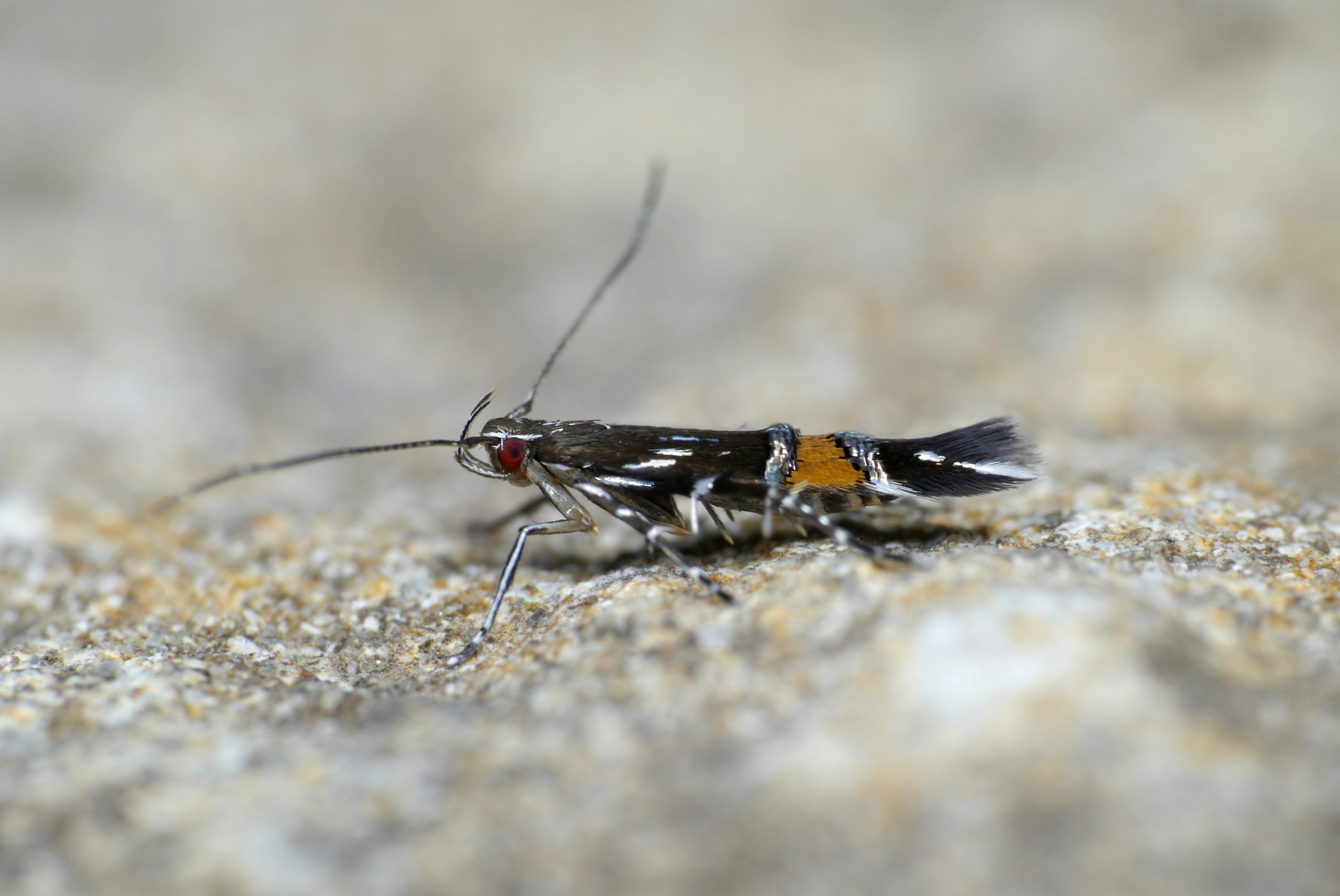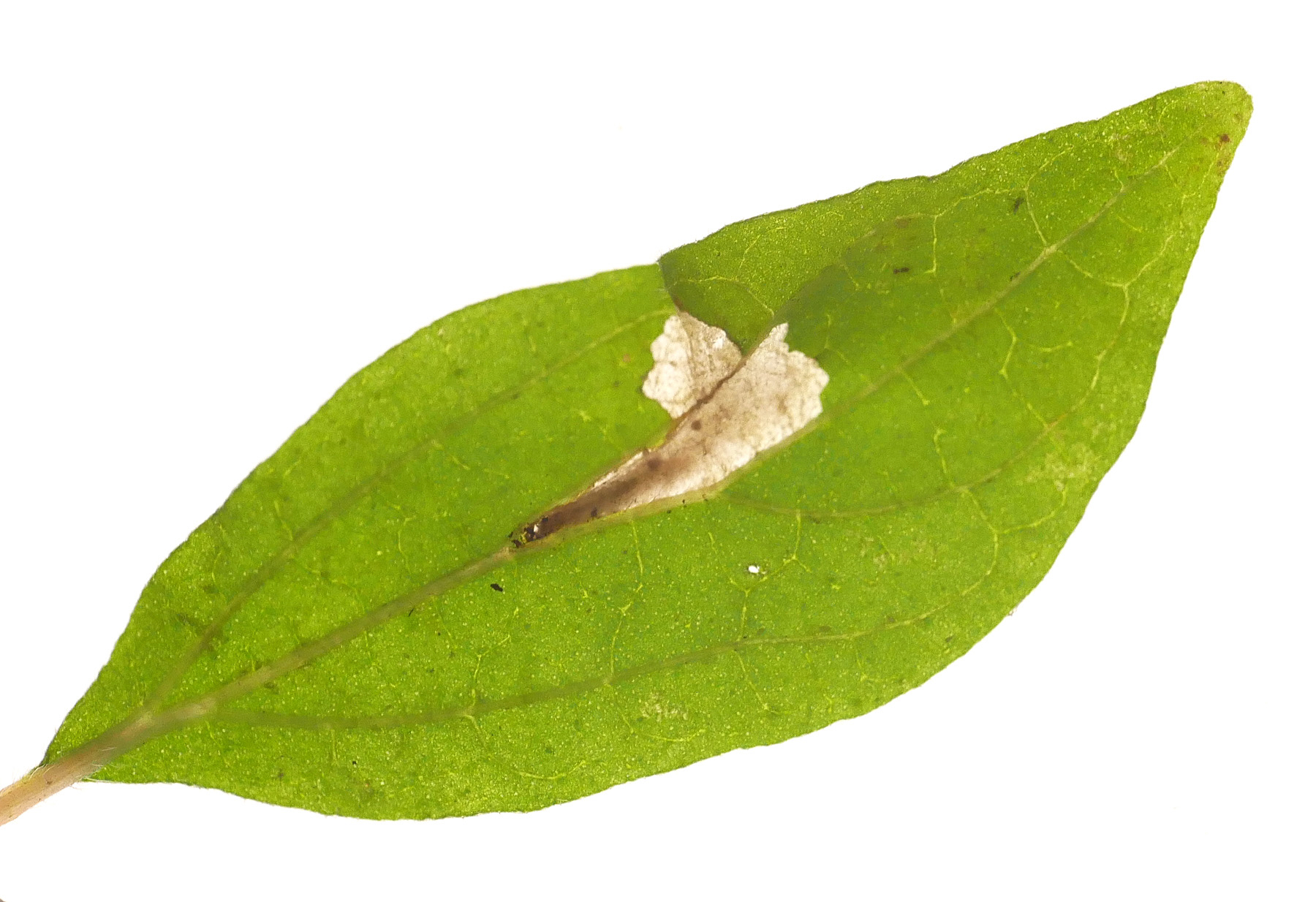Star Species 2025
Pellitory Beauty Cosmopterix pulchrimella (Chambers, 1875).
A micro moth new to Worcestershire
This attractive tiny micro moth, with a 9mm wingspan, was originally from southern Europe. The first UK record was in Walditch, Dorset on 13th October 2001 and since then it has rapidly colonised southern England and is now expanding its range northwards, working its way up the Severn estuary and reaching Cheltenham in 2023. The moth is now reasonably widespread below the line that connects the Severn estuary and the Wash. The first record in Worcestershire was made in 2024. A visiting entomologist found mines to be common on plants on the old walls in the vicinity of the cathedral in Worcester. It was then found on plants around the abbey ruins in Evesham. One of these mines was retained and produced the adult photographed. Adults can sometimes be found performing odd little display dances, spinning around on the leaves of the plants.
The larvae feed on Pellitory-by-the-Wall Parietaria judaica where they produce blotch mines in the leaves. The mines look whitish on plants growing in the shade, and grey/brown where there is more light. The larvae seem to prefer shaded plants. Silk strands are produced inside the mine, under which the larva will hide when not feeding. Larvae can and do change leaves, creating new mines in their search for fresh food. Most frass is ejected through an opening near the start of the mine. Pupation occurs within the mine or in a leaf fold. It is thought to have two generations between June and November.
The foodplant is commonly found on walls and pavements, so this is a species to search for in built-up areas during 2025.

Pellitory Beauty Cosmopterix pulchrimella, Oliver Wadsworth

Pellitory Beauty Cosmopterix pulchrimella larva in blotch mine, Oliver Wadsworth
